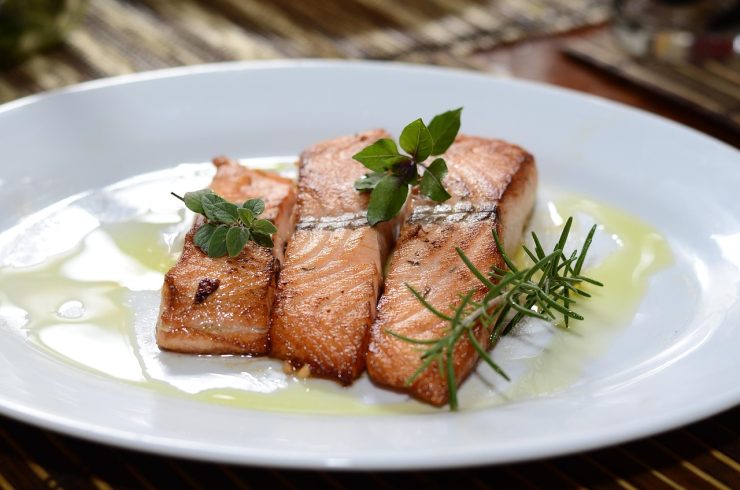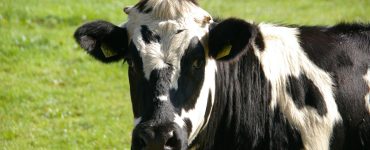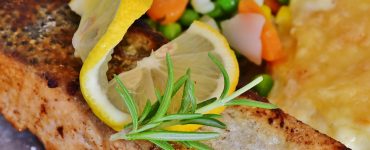The Truth About Salmon: Wild vs. Farmed + A One-Pan Recipe You’ll Love
Salmon is often praised as one of the healthiest foods you can eat—but not all salmon is the same. There’s a huge difference between the farmed salmon you find in most grocery stores and the wild-caught variety.
Wild-caught salmon is loaded with nutrients and healthy fats, making it a go-to for people who prioritize their health. But you may have also heard concerns about contaminants, sustainability, and ethical sourcing when it comes to salmon. So what’s the real story?
It’s easy to stick to beef, chicken, and pork, avoiding the seafood aisle altogether. But if you’re after the best nutrition and a responsible choice, it’s worth taking a closer look at salmon. Let’s break it all down—what makes wild-caught salmon superior, why farmed salmon isn’t the best choice, and how to cook salmon perfectly with a one-pan recipe that’s both easy and delicious.
Why Salmon Deserves a Spot on Your Plate
Wild-caught salmon isn’t just tasty—it’s packed with nutrients that can seriously boost your health. Here’s why it should be a staple in your diet:
1. Loaded with Omega-3s (And Way More Than Farmed Salmon!)
Salmon is one of the best sources of DHA and EPA, two powerful omega-3 fatty acids that fight inflammation, support brain health, and protect your heart. But here’s the kicker: wild-caught salmon has significantly more omega-3s than farmed salmon.
Most modern diets have way too many omega-6s (found in processed foods and vegetable oils), which throws our bodies out of balance. Too many omega-6s contribute to inflammation, which is linked to everything from obesity to autoimmune diseases. Eating wild-caught salmon helps restore that balance naturally.
2. Packed with Essential Vitamins & Minerals
Wild salmon is rich in:
-
Vitamin B12 – Supports brain function, energy levels, and red blood cell production.
-
Vitamin D – Critical for bone health, immune function, and mental well-being.
-
Iodine – Essential for thyroid health, which regulates metabolism and energy levels.
-
Selenium – A powerful antioxidant that protects against oxidative damage and helps counteract any mercury exposure in fish.
Just one serving of wild-caught salmon delivers more than your daily recommended intake of B12 and D—two vitamins that many people don’t get enough of!
3. A High-Quality Protein Source
With about 23 grams of protein per 3.5-ounce serving, salmon is a fantastic way to get muscle-building, metabolism-boosting protein. Plus, the amino acids in salmon are easier for your body to absorb compared to those in beef, pork, or chicken.
Wild vs. Farmed Salmon: What’s the Big Deal?
Not all salmon is created equal, and the differences between wild and farmed salmon are massive. Here’s why wild-caught is the way to go:
1. Wild Salmon is Nutrient-Dense—Farmed is Not
Wild salmon naturally contains more omega-3s, vitamin D, and other essential nutrients. Studies show that wild-caught salmon has about 12.4 times more omega-3s than omega-6s, while farmed salmon has only 2.9 times more—a much less favorable ratio.
It also has significantly more vitamin D. Since vitamin D deficiencies are common, getting it from food (instead of just supplements) is a big win.
2. Farmed Salmon is High in Contaminants
Farmed salmon is raised in crowded pens and often exposed to toxins. Studies have found that farmed salmon contains higher levels of harmful contaminants like PCBs, dioxins, and pesticides. These chemicals accumulate in fat and can have long-term health effects.
3. Wild Salmon is Sustainably Sourced, Farmed Salmon is Not
Farmed salmon is basically seafood’s version of factory farming—overcrowded conditions, unnatural diets, and a reliance on antibiotics to prevent disease.
Wild-caught salmon, especially from Alaska, is fished sustainably, ensuring that populations remain healthy. Alaskan law actually prohibits salmon farming, so any salmon from Alaska is guaranteed to be wild and sustainably caught.
4. Farmed Salmon is Genetically Modified
In a controversial move, the FDA approved genetically modified (GMO) salmon for human consumption. This type of farmed salmon is designed to grow twice as fast as regular salmon, raising concerns about its long-term health effects.
If you’re looking for the safest, most nutritious option, wild-caught salmon is hands down the better choice.
Where to Find High-Quality Wild Salmon
It’s easy to find salmon at the grocery store, but knowing where it comes from is key. Here’s how to ensure you’re getting the best quality:
-
Choose Alaskan Salmon – It’s always wild-caught and sourced sustainably.
-
Look for “Green” or “Best Choice” Ratings – Programs like Monterey Bay Aquarium’s Seafood Watch rate seafood based on sustainability.
-
Buy Direct from Suppliers – Companies like Alaska Gold Seafood ship high-quality wild-caught salmon straight to your door, ensuring freshness and sustainability.
-
Check for Certifications – The Marine Stewardship Council (MSC) certifies sustainable seafood, so look for their label.
How to Cook Salmon to Perfection: One-Pan Dinner for Two
Now that you know why wild-caught salmon is the best choice, let’s get cooking! This one-pan salmon dinner is easy, delicious, and perfect for two.
Ingredients:
-
2 wild-caught salmon fillets
-
1 cup cherry tomatoes, halved
-
1 small zucchini, sliced
-
½ red onion, sliced
-
2 tbsp olive oil
-
1 tsp garlic powder
-
½ tsp smoked paprika
-
Juice of 1 lemon
-
Salt & pepper to taste
-
Fresh parsley (for garnish)
Instructions:
-
Preheat your oven to 400°F (200°C).
-
Prep the veggies. Toss cherry tomatoes, zucchini, and red onion with 1 tbsp olive oil, salt, and pepper. Spread on a sheet pan.
-
Season the salmon. Drizzle fillets with remaining olive oil, then sprinkle with garlic powder, smoked paprika, salt, and pepper.
-
Assemble the pan. Nestle the salmon fillets among the veggies.
-
Roast for 12-15 minutes. Cook until the salmon flakes easily with a fork and the veggies are tender.
-
Squeeze fresh lemon juice over everything and garnish with parsley.
Enjoy your nutrient-packed, easy-to-make wild salmon dinner!
The Bottom Line
When it comes to salmon, quality matters. Wild-caught salmon is healthier, more sustainable, and free from the contaminants and questionable practices associated with farmed salmon.
By choosing wild-caught options—especially from Alaska—you’re not only making a better choice for your health but also supporting sustainable fishing practices.
So go ahead, enjoy that salmon, and feel good knowing you’re getting the best of the best!











